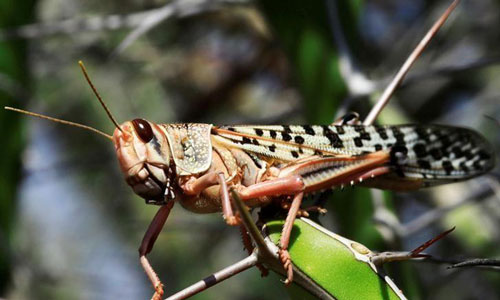Riayaan Ahmad
In July 2020, the people were shocked, especially the ones involved in the agricultural department, when a swarm of locusts penetrated Pakistan. The swarm started from Sindh and spread devastation everywhere. According to the Guardian, Pakistan suffered a loss of 489 billion PKR due to damage caused to Winter Crops and a further 425 billion PKR to Summer Crops by locust.. People may face the aftermath of the locust attack: in shape of a famine, or a food crisis, anything can happen. Although the Government’s timely measures saved over 50% of Pakistan’s crops, but still, a lot was lost. The loss in agriculture output further burdened the economy of Pakistan.
However, if we look at what can happen in the future, this incident will look like nothing but a small teaser clip. It is predicted by some experts that the swarm of locusts will return to Pakistan, stronger than ever and causing much more destruction.
Long time ago International experts had warned that Pakistan would suffer because of locust attacks in 2019,. The prediction proved right. Now they foresee that the Locusts will return once more, this time in larger swarms than ever before, thus damaging the crops more than ever. To perceive why this prediction is assumed to be extremely accurate, we will need to go back in time. In 2018, the Arabian peninsula was hit by unusual cyclones and rainstorms. Deserts overflowed with water and many areas of them started to bear vegetation. On top of that, the rains did not stop, creating perfect conditions for Locust breeding .Question arises as to why didn’t such a tropical season occur in the Arabian peninsula earlier?
To find the answer to this question, we will need to go into a few geographic and oceanographic factors. The locusts were primarily encountered in Africa and used to breed in the green under wet conditions, attack the African states and feed on their crops. However, in 2018, strong western winds dominated the climate which brought excessive rain clouds, as well as locusts to the Middle East. There the breeding processes happened and hundreds of thousands of locusts were ready to feast on the crops found in the Middle Eastern and Asian states. To survive in adverse climatic conditions of these regions, the locusts had modified themselves. They had grown a stronger exoskeleton with the capability of countering the powerful, bright sun rays. In the future, more rains are predicted to strike the Arabian and Asian coastline and thus more Locusts will breed. To prevent that from happening, effective planning is required.
Firstly let’s see what can be done to stop the Locusts from returning to Pakistan. Pakistan can establish an international council, consisting of all Asian agricultural dominant countries such as; China, Iran, Indonesia, Vietnam and Thailand etc. Next the council should start raising funds. Next year, by February, if locusts start breeding again then a joint activity must be undertaken by the member countries. Spraying planes filled with organochlorines (most effective insecticides) should fly over the breeding area and spray the fields.
If this is performed timely and accurately then the Locusts will die. The ideal time to spray should be directly after sunset as at that time the Locusts settle down for eating and breeding. In this manner, they won’t be able to lay eggs before dying and locust will be stopped from penetrating Asia. Pakistan will be saved from Locusts.
If the above mentioned or any other preventive measures are not taken then Pakistan must stay prepared to tackle the issue at home. . To begin with, NDMA (National Disaster Management Authority) should study and analyze the routes taken by Locusts that penetrated Pakistan in 2019 and 2020. Next they should position spray planes, in the areas where Locusts are expected to attack. As already mentioned likely time to perform this is February. The pilots who will fly spraying air planes must undergo training in at least a good month-long course. The pilots will learn what to do and how to do it effectively to achieve the best results. The planes should carry organochlorines. As soon as first sighting of locusts is reported in an area, spraying must be done in time ie. immediately after sunset. For protection of people, they should be informed to stay indoors so that they don’t come in direct contact with insecticides. Timely start of operations holds key to success.
It needs to be emphasized that the locust problem is very real, solutions for which needs to be found urgently. There is barely enough time, February is not far when this problem may start re-emerging. Before that happens there is a need to identify an effective solution like indicated in previous paras and make plans to implement it for resources be allocated.
If a solution is not thought of, then the results can be devastating. According to a few experts, Pakistan might suffer famine if things are not arranged. The 2020 attacks have already cost Pakistan a lot as many basic agricultural products including wheat had to be imported to meet the needs of the local population. Just imagine that if an even mightier wave of locust hits Pakistan, then what will happen.
Effective measures need to be taken to avoid, severe damage to crops in Pakistan. which are source of livelihood for majority of people in rural areas. and provide food security to the country.








